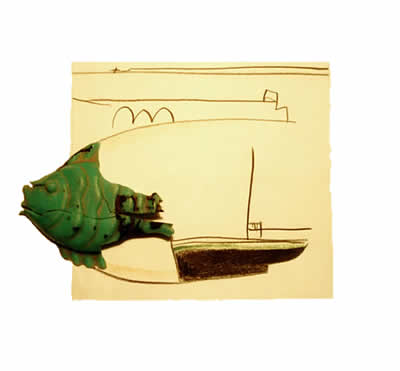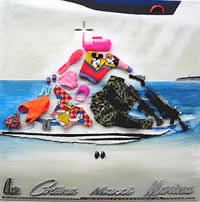I was
born in St Ives, Cornwall in 1951, one of six. My father was Peter
Lanyon - a landscape painter who became a major figure in the world
of art.
After
the war St Ives had become a centre of the modern movement in abstract
art and my father was commissioned to produce the painting Porthleven for The Festival of Britain. His mentors were Naum Gabo and
Ben Nicholson. While I was tearing round the garden as Davy Crockett,
movers and shakers of art were passing the sugar and spreading the
cream.
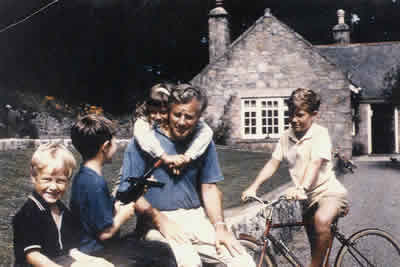
Little
Park Owles 1963
Shortly
before he died in 1964, as the result of a gliding accident,
we spent some days together in his studio making a model aircraft.
We made prototype wings out of polystyrene and tried to strengthen
them with muslin and glue-size. Years later I read what someone
had written about his painting Clevedon Night, which
had these two prototype wings attached to the canvas. They might
be 'boats bobbing up and down' but I knew what they were. They
weren't boats. But it doesn't matter whether this was true or
not. That isn't the point - we read our own life into paintings.
A
few days with him in the studio, a few days camping out in the
Thames van on Perranporth Airfield and he was gone. I was thirteen.
He was forty-six. His death came into me like an ocean.
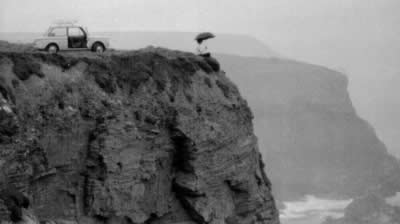
North
Cliffs 1968 (photo - Paul Otto)
I
was brought back from Bryanston to the local grammar school
in Penzance. I won the art prize and thought about going on
to art school but my mother said, 'You'll end up in a corner
screaming.' This was the 1960's. In the 30's she'd had to do
three years of drawing before they'd let her hold a brush. So
that was that. It would be twenty-five years before I got the
smell of paint again. I went on to university and joined the
meritocracy - the beginning of the great unwinding of the class
system. It was exciting. There was a political edge - we were
on the streets.
Half
a century later, I look back in wonder:
Upper class background, middle class education, university career
in free-fall - I should have been a class disaster. The one
saving grace in messing up is you get a new beginning. If you
can realise that and shoulder the weight of having taken goodwill
from others and shagged it you get a new beginning.
It
was a terrible trade off but I got so much from four years at
university starting with Geology and Psychology. In my last
year I read History of Science, Archaeology and Linguistics.
I was a burning fuse - changing courses and reading stuff that
wasn't part of the brief. I was after something.
Four
years in academia then a job on a tractor - working in the building
trade, becoming physical. The tragedy and sadness of my loss
was bearable. I trained as a carpenter and joiner. I handled
many diverse materials - renovating four houses, subcontracting
and working for other builders. I just learned so much.
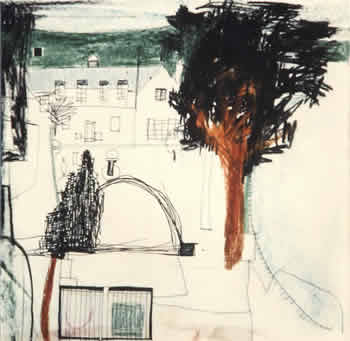
Little
Park Owles '92
|
|
It
was not until 1988 that I began to take my artwork seriously.
At that time I was drawing and painting every morning with my
son, in the days before he went to school. He always had the
best titles. I'd ask him about one of his drawings and he'd
say with the absolute sincerity of a four-year-old, 'Three
Cows Walking on the Water'.
Between my father and my son I had begun to address the problem
of what anything is, or is meant to be in a painting. If cows
could walk on water and bits of polystyrene that were once wings
can bob up and down like boats, then painting is alive and the
better for being marginalised by all the exquisite distractions
of sound and movement. |



